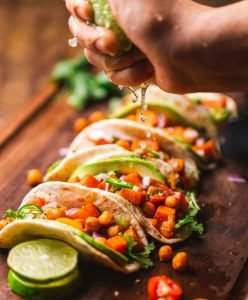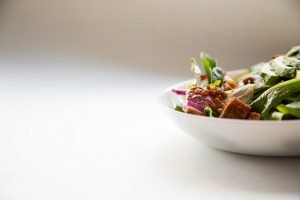I’m interested in food, herbs and spices, and have been writing about them in my blog since 2010. Over the years I’ve collected a few recipes that are worth sharing.
This is a list of the best culinary herbs and spices. If you want to try something new, or don’t know where to start, start here.
It will give you links to more detailed information on each herb or spice. If you are interested in cooking with these ingredients, it will also give you some links to recipes.
I hope you find it useful!
Coriander is one of the oldest herbs and spices known to mankind. It has been cultivated for over 3000 years and is native to regions spanning from southern Europe and northern Africa to southwestern Asia. The name coriander can refer to both an herb and a spice. When referring to the herb, it is usually called cilantro in North America, coriander leaf or Chinese parsley elsewhere. The dried seed is called coriander and both parts of the plant are used as culinary ingredients worldwide.
Coriander is an annual herb in the family Apiaceae. It is also known as Chinese parsley or cilantro, particularly in North America. All parts of the plant are edible, but the fresh leaves and the dried seeds are commonly used in cooking. Coriander is native to regions spanning from southern Europe and northern Africa to southwestern Asia. It is a soft plant growing to 50 cm (20 in) tall. The leaves are variable in shape, broadly lobed at the base of the plant, and slender and feathery higher on the flowering stems. The flowers are borne in small umbels, white or very pale pink, asymmetrical, with the petals pointing away from the centre of the umbel longer (5–6 mm) than those pointing toward it (only 1–3 mm long). The fruit is a globular dry schizocarp 3–5 mm diameter.
Coriander can be grown indoors in containers if given sufficient light. If growing coriander leaves indoors, cut off what you need as you need it. Remove flowers before they go to seed if you want to keep harvesting more leaves as blooming will cause it to stop making new leaves.
Coriander grows best between 22°C and 30°C
Coriander, Cilantro, Chinese Parsley… all different words for the same herb. The seed of this plant is called Coriander seed.
The leaves of this plant are most often used as a garnish or in salsas and other dishes that require a fresh herb. They are not as strong as the seeds when dried. The leaves have a distinctive and somewhat medicinal scent, which some people don’t like at all.
Coriander is the seed of the cilantro plant. The leaves and stems of the plant are called cilantro, while the dried seeds are called coriander. The fresh leaves smell like soap and can be added to sauces and stews in Mexico, South America, the Carribean and India.
Coriander seeds are used in Mediterranean, Middle Eastern, Indian, South Asian and Mexican cuisine. They have a lemony citrus flavour when crushed and taste very different from cilantro leaves.
Coriander seeds can be dry roasted in a pan until they start to pop and then ground in a spice grinder or pestle & mortar to use as an aromatic spice in stews, tagines, curries or as a rub for chicken, fish or meat. They can also be used whole as a pickling spice. Coriander seeds go well with cumin, fennel and red pepper.
Coriander is the dried seed of the herb Coriandrum sativum, a member of the parsley family. The plant grows to about two feet high and bears delicate feathery leaves and pinkish-white flowers. It is native to southern Europe and northern Africa, but it is now cultivated in many countries around the world.
The seeds are small, round and yellow-brown in color. They have a sweet smell and a warm, spicy taste similar to that of citrus peel. The flavor of coriander is not very strong when raw, but becomes more pronounced when it is roasted or fried in hot oil.
Coriander seeds are used whole or ground in many different cuisines all over the world. They are a vital ingredient in curry powder and garam masala, and feature prominently in Indian cooking. They are also used in spice mixes for sausages and meatballs, as well as pickling spices for vegetables such as beets, carrots and onions.
In Mexican cuisine, coriander seeds are an important ingredient in many salsa recipes and popular dishes like guacamole and tamales. In Chinese cooking, coriander leaves are often added to stir-fry dishes at the end of the cooking process for
Coriander is an ancient spice and was used by the Egyptians in mummification. It has been found in Bronze Age settlements and in Roman ruins. Coriander was mentioned in the Old Testament, and there are references to it in ancient Greek and Roman literature.
The name coriander comes from the Greek word koris, meaning bed bug. The seeds smell like crushed bed bugs, which is why some people hate fresh coriander.
In Europe, coriander is used mostly in cakes and other sweets, but it is also used for pickling vegetables and for flavoring sausages. In Mexico, coriander is used to flavor salsas and chocolate drinks. Ground coriander seed was used as a meat preservative by early American settlers.
Coriander leaves are known as cilantro in the United States, but that name refers to the whole plant elsewhere in the world.

